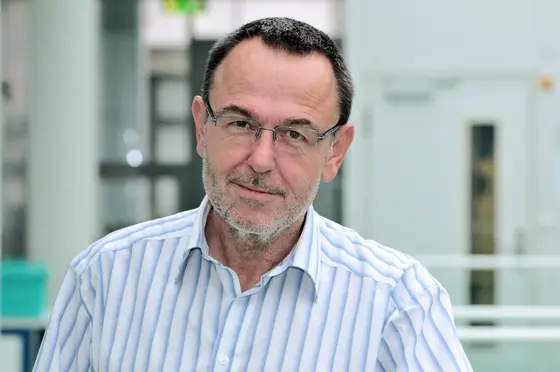The vaccine against human papillomavirus (HPV), which became available in 2006, was the first ever immunization that had been developed specifically against cancer. It was developed with major participation of Lutz Gissmann, who was head of a research division at the German Cancer Research Center (Deutsches Krebsforschungszentrum, DKFZ) until 2015.
Gissmann joined the laboratory of Harald zur Hausen, who later became a Nobel Prize Laureate, as a PhD student. There he investigated the possible link between HPV and cervical cancer. Up until then, HPV was only known to cause warts in the skin. In his early research work, Gissmann found out that the HPV family comprises numerous different types, which he differentiated based on their DNA. Several of them are directly linked to specific benign skin growths and malignant cancers.
Working in zur Hausen's lab in the early 1980s, Gissmann isolated and characterized HPV types 16 and 18 in collaboration with Matthias Dürst and Michael Boshart. HPV16 and HPV18 are the most common causes of cervical cancer. In addition, HPV16 is responsible for most cases of HPV-associated head and neck cancer as well as anal and genital cancers.
Early on, Gissmann already pursued the idea to use a vaccine to prevent HPV infection and, thus, cancer. Developing a vaccine usually requires breeding large quantities of the pathogenic agent in the lab. However, this does not work with HPV. Gissmann therefore explored the possibility of producing only the proteins of the virus shell in the Petri dish, where they assemble spontaneously to form virus-like particles; these then serve as vaccine. This method was later to become indispensable for companies that produced the vaccine.
“HPV vaccination is an excellent possibility to prevent cancer,“ said Gissmann when receiving the award. “The significant decline in the number of precancerous lesions in countries where the vaccination is well adopted speaks for itself. Therefore, it is very sad that in Germany not even half of all girls in the recommended age have been vaccinated.“
The vaccines that were licensed in 2006 for immunization against the two high-risk types HPV16 and HPV18 are produced using an expensive and laborious method and require cooling for storage and transport. Thus, they are almost unaffordable in the countries where they are most urgently needed: in less developed countries, where thousands of women still die from cervical cancer year by year.
Gissmann therefore pursued intensive studies with the goal of developing a low-cost and stable HPV vaccine that consists of simpler viral protein structures. Additionally, he explored the possibility to administer the vaccine as a nasal spray and developed a prototype of a therapeutic vaccine, which not only prevents HPV infection but also cures precancerous lesions in persons who have already contracted HPV infection.
Gissmann was presented the 2016 Maurice Hilleman Award, which comprises US $20,000, at the EUROGIN Conference in Salzburg, Austria. The prize money was donated by Merck & Co. The Maurice Hilleman Award is given at irregular intervals to scientists who have made outstanding contributions to the development or implementation of new vaccine. This year, the International Papillomavirus Society had been entrusted with proposing a candidate for the award.
Maurice Hilleman was a researcher at Merck. Although his name has almost been forgotten in the public, he is one of the most eminent pioneers in vaccine research. His developments were the basis for eight of the vaccines that are routinely recommended today for children including, for example, the immunization vaccine against measles, mumps, rubella (MMR) and the vaccines against hepatitis A and B.
